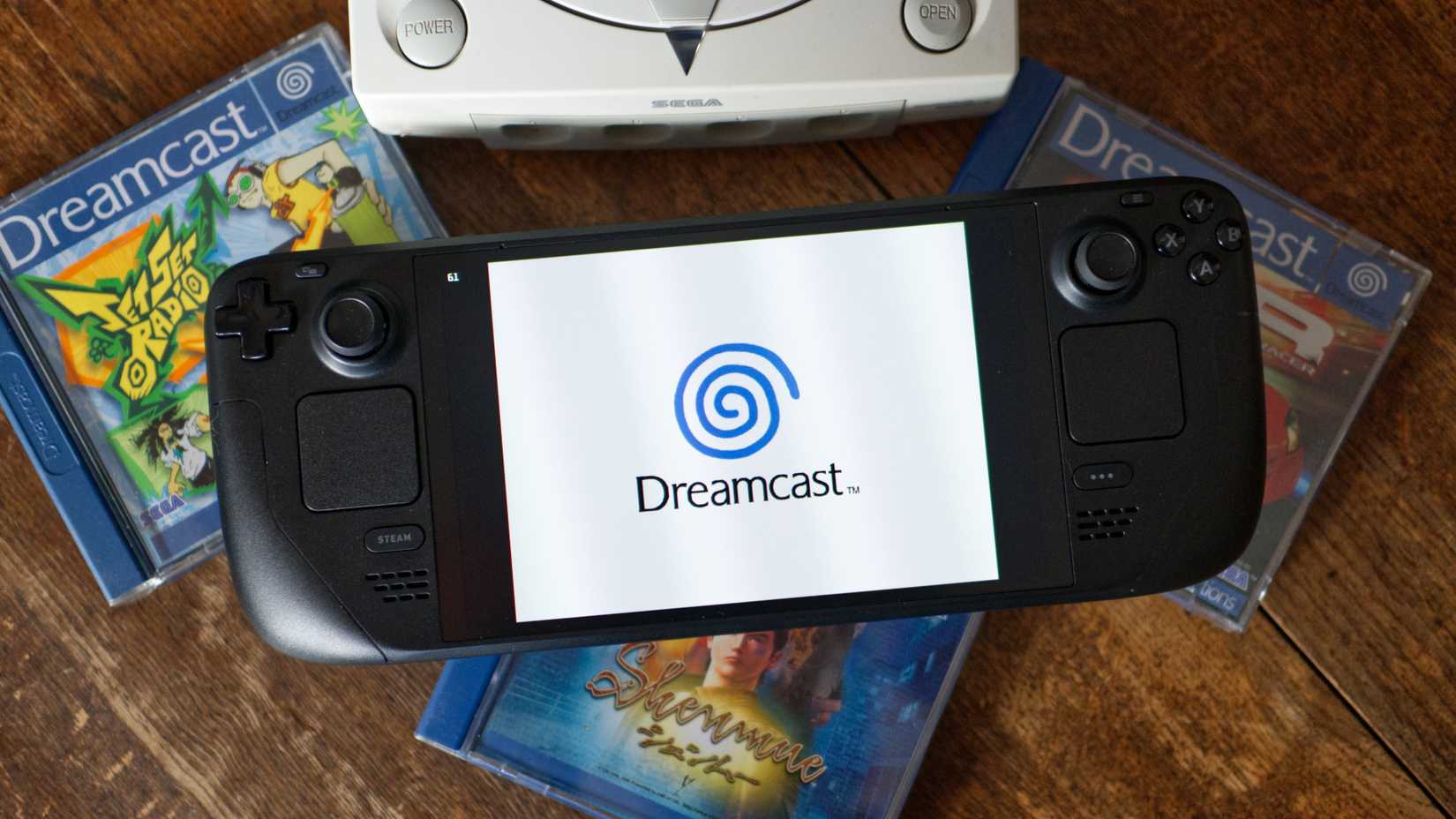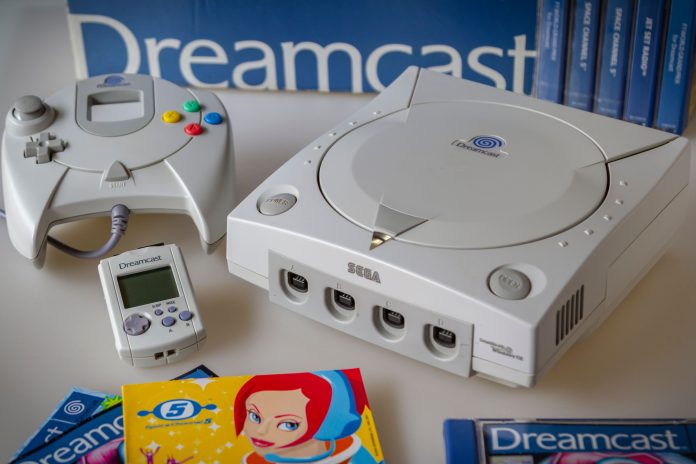Whether you see Sega’s final console through rose-tinted glasses or look upon it as a fitting end to a decade of bad financial decisions, the Dreamcast has probably impacted how you play games in more ways than you know.
It can seem like the internet is obsessed with the Dreamcast, but rather than pure nostalgia, Sega’s last gasp into the world of hardware draws reverence. The Dreamcast really was worth the hype.
The Games Were Incredible
A console is nothing without its games, and the Dreamcast was no exception. Though it’s possible to hold a warm place in your heart for a childhood console’s retro aesthetics or quirky peripheral choices, most core retro gaming memories boil down to one thing: the games. The Dreamcast may have been a commercial failure, but its stellar lineup of software does not shoulder the blame.
The Dreamcast represents what became SEGA’s most experimental period, going all-in on weird concepts like online puzzler Chu Chu Rocket, rhythm-action games like Space Channel 5, and Sega Bass Fishing, which even earned its own dedicated peripheral. The company threw caution to the wind and green-lit projects like weird anthropomorphic fish simulator Seaman while publishing cult hits like Rez and Cosmic Smash. It even adapted its light-gun favorite zombie shooter into a type-to-shoot experience with The Typing of the Dead.
Despite a new thirst for the weird and wonderful, Sega also barreled ahead with standout titles like the visually stunning Sonic Adventure, cel-shaded skate and graffiti simulator Jet Set Radio, and the massively popular Phantasy Star Online (which still attracts players to this day). The console also became known as home to the best sports games around, including Sega’s own highly addictive Virtua Tennis plus the NBA and NFL “2K” series of games.
The Dreamcast’s most ambitious title came in the form of Shenmue, which was the most expensive game in the world at the time of development and one that went on to set a new standard for open-world RPGs. It included a living world that was populated with non-player characters (NPCs) that moved around on set schedules, a divisive but now standard quick-time event (QTE) action mechanic, and an engrossing blend of free-form adventure, fighting, and mini-game (including real-world arcade cabinets and forklift racing).
It wasn’t a lack of games that sunk the Dreamcast, though pumping millions of dollars into Shenmue probably didn’t help (though the world is arguably a better place because of it).
Dreamcast Brought the Arcade Home
Sega owes much of its reputation (even today) to the success of its iconic arcade machines. Recognizing this, the company attempted to capitalize on its arcade success with the Dreamcast, a console that shared similar hardware to the company’s NAOMI arcade board, which was introduced shortly before the console’s launch in 1998. Though the NAOMI had double the system, video, and audio memory compared with the Dreamcast, its hardware similarities made it possible for SEGA to produce compelling home versions of its arcade offerings.
This should have been a slam-dunk for Sega, and in many ways it was. The Dreamcast was home to a huge number of first-party arcade favorites, including titles like Crazy Taxi, Virtua Fighter 3tb, The House of the Dead 2, and Sega Rally Championship 2, converting beautifully for the home market. It’s hard to overstate how much having a Dreamcast felt like having a mini arcade cabinet in your living room at the time.
The Dreamcast became a magnet for fans of the arcades, which in turn saw it receive many more arcade ports courtesy of third-party publishers. This included fighting games like Namco’s Soulcalibur, Capcom’s legendary Street Fighter and Marvel vs. Capcom series, and SNK’s King of Fighters.
Other standout hits included Konami’s Silent Scope, Midway’s Hydro Thunder, and Namco’s Mr Driller, all of which were arcade games that found a home on the platform. There was even a branded arcade stick, complete with a slot for a Dreamcast VMU.
While consoles like the SNES were known for JRPGs and the PlayStation earned its stripes by going all-in on early 3D graphics, the Dreamcast closely aligned itself with the arcade scene. But this wasn’t a case of SEGA putting all its eggs in one basket, since the company also focused on pioneering a new kind of living room experience.
Online Gaming On Your Sofa
Though Microsoft’s Xbox is credited with popularizing online gaming on consoles, it was the Dreamcast that ushered in the era of online multiplayer in the living room. Sega’s console was the first to ship with a detachable modem, with the company later shipping an upgrade in the form of a broadband adapter for faster always-on connections.
This is something that Sony’s PlayStation 2—widely seen as the console that sunk the Dreamcast—lacked. Not only did the Dreamcast support web browsing via Dreamkey, a web browser on a disc that received several updates during the console’s lifespan, it was also capable of proper online play, including the first console cross-play in titles like Quake III Arena.
While being pasted by mouse and keyboard players in Quake wasn’t any Dreamcast owner’s idea of fun, more appropriate console experiences like Chu Chu Rocket came to define the online experience. The arrival of Phantasy Star Online, the first massively multiplayer game to succeed on a console, earned Sega another badge of honor.
The Dreamcast’s online connection was also used to enable free downloadable content, including courses in both Sonic Adventure games, time trial challenges in Metropolis Street Racer, and gameplay variations for Crazy Taxi 2. These downloads were small and fit snugly on a regular memory unit.
Much of this functionality felt ahead of its time, particularly given the slow nature of internet connections back in the late 90s and early 2000s. It’s entirely fair to say that the world wasn’t quite ready for this sort of experience, but that doesn’t make it any less impressive.
A Generational Leap and a Console of Firsts
The Dreamcast was released at a time when new platforms represented a generational leap forward for video games. This sense of progress didn’t just apply to graphics, but also to gaming concepts as a whole. The Dreamcast typified this era by being a console of firsts and a visual showcase of what the future would look like.
In addition to its online features, the Dreamcast was the first console that featured a “home screen” that offered a settings menu, media playback, and memory card management. It also came with the first controller to use analog triggers, which were put to excellent use on the console’s many racing games. Though memory cards were on the way out at the time, Sega’s Visual Memory Unit (VMU) was the first of its kind to do more than just store save data. You could transfer data between units and even run mini game experiences, including Sonic Adventure’s tamagotchi-like Chao garden.
On a technical level, the Dreamcast made the original PlayStation look like a fuzzy mess while offering performance that Nintendo 64 owners could only dream of. This was an era when many titles still saw 60 frames per second as a baseline target, particularly the arcade ports for which Sega was so well-known.
On top of this, the Dreamcast was the first console to offer crisp 480p output via the use of a VGA adapter. Though not every game was capable of VGA output, the adapter became a must for anyone who wanted supported titles to look their absolute best and who had a fat CRT monitor they could commandeer (it was the late 90s, after all).
Sega also attempted to set itself up for success in terms of PC ports, working with Microsoft to design the Dreamcast to take advantage of an optimized version of Windows CE with DirectX (another first). The idea here was to make it easier for developers to port PC games, and though Windows CE wasn’t used by many games, some notable PC ports included Worms Armageddon, Hidden & Dangerous, and 4×4 Evolution.
The World Needs a Dreamcast Mini
I still have my original Dreamcast, along with two other units in varying states that I’ve accumulated over the years. I have a GD-ROM replacement known as the GD-EMU that allows me to play games on original hardware using disk images rather than original media. I’ve also set my Steam Deck up as a portable Dreamcast emulator, something I sheepishly refer to as the Steamcast.

I still think Shenmue is one of the best games ever made, and I still remember the best way to get an S-rank on Crazy Taxi. I yearn for the days of four-player PowerStone 2 local multiplayer and a time when I was young enough to be able to overlook the cringeworthy dialogue in Sonic Adventure. I’m self-aware enough to admit that nostalgia certainly plays a role here.
But the Dreamcast really does hold up, at least the games do. Unfortunately, with less than 10 million Dreamcast consoles sold, getting your hands on original hardware isn’t always easy or affordable. Going the emulation route is far easier, as is grabbing some of the best games via modern remasters (like the Shenmue I & II collection on Steam).
But the world really needs, and what many retro enthusiasts would undoubtedly flock to, is a “Dreamcast Mini” hardware re-release. We’ve seen this happen with Nintendo and Sony consoles, and even Sega has had success with the Sega Genesis Mini 2. The delay on the Dreamcast likely comes from the fact that platform emulation has been a tough nut to crack.
The good news is that Sega holds the rights to many of the games that fans would expect to see, from Sonic Adventure to Chu Chu Rocket. Whereas rivals like Sony had to negotiate deals with third-party publishers to include the likes of Final Fantasy VII and Rayman on the PlayStation Classic, I’d be happy to see a Dreamcast mini that stuck to a core lineup of SEGA all-stars. Plus, there’s almost always some way of making “modifications” to further expand the library.
Here’s hoping that within the next few years, we’ll reach a point where Sega starts making Dreamcast consoles again. I could always use another one, after all.
So what really sunk the Dreamcast? Sony’s upcoming PlayStation 2, which ended up being one of the most successful consoles of all time, was probably the biggest culprit. The inclusion of a DVD drive and the quality of titles like Metal Gear Solid 2 was a hurdle that Sega couldn’t overcome.
Other reasons include Sega’s penchant for arcade gaming at a time when rivals were innovating elsewhere, the unproven nature of online console gaming, and the failure of the Sega Saturn being fresh in everyone’s mind probably didn’t help either.
